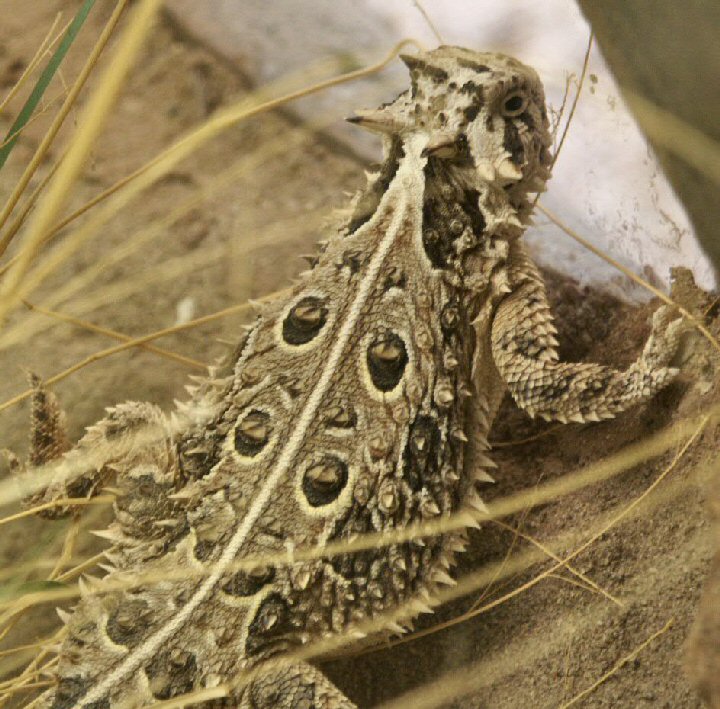Special anatomical, physiological
or behavioral adaptations:
Texas Horned Lizards have very unusual defense
mechanisms. The first defense mechanism they have is when they feel danger,
they will flatten out their bodies and just freeze wherever they are at.
They also have the ability to lighten or darken the body to camouflage
themselves against the ground, or bury themselves under loose soil.
Burrowing is also an important means of regulating their body temperature.
Texas horned lizards collect water by "rain
harvesting." They raise and flatten their bodies, then lower the
head to collect water flowing along channels formed by their scales.
When they really threatened their bodies can
puff out to make it very difficult for predators to swallow. They
also have ducts near their eyes, through which they can squirt blood a
good distance at predators. If it is sufficiently agitated it may
release up to 1/3 of the blood in its body! Only some of the horned
lizard species can expel blood from the eyes. |
Vulnerability:
The major predators of horned lizards are raptors.
Historically, they have also been attractive to collectors for the pet
trade, but they cannot now be legally collected without a permit.
Their habit of basking on roads puts them at considerable risk, but
their greatest vulnerability is to habitat loss. The spread of fire
ants has also driven out their preferred food -- harvester ants.
Unfortunately the lizards are also sensitive to the pesticides used to
kill the fire ants.

|